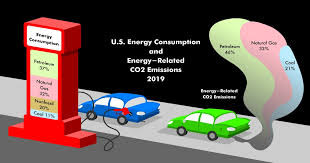If the $7500 tax credit for electric vehicles vanished, there’s still a business case for building these cars. In California and a bunch of other states, manufacturers who sell a gas-guzzler like a Nissan Armada or a regular F-150, must offset the carbon emissions. Legacy car makers must meet a carbon quota with “production credits” from zero-emission vehicle.
While the $7500 tax credit for electric vehicles (EV) is “the carrot” for consumers, the production credit is, arguably, the larger incentive. It was created by the California Air Resource Board and has fueled the EV industry, particularly Tesla, since the mid-2000s. **
Climate Credits:
Called The Zero-Emission Vehicle (ZEV) Credit, it plays an important role in vehicle manufacturing. This credit should not be confused with the Advanced Manufacturing Production Credit, or or The Advanced Energy Project Credit. Those began in 2022, with the Inflation Reduction Act. These three programs, while similar in name, incentivize electric vehicle development with different carrots and sticks.
The CARB program is centered around selling zero emission vehicle (ZEV) credits from those who produce them, to vehicle manufacturers who can, but do not. ‘On paper’ the program reads like a cap-and-trade program to reduce both carbon and air pollution. In California, the 2025 the requirement is that 22% of a manufacturer’s vehicles meet a ZEV standard, but it ramps up to 100% in 2035 and later.
When an electric vehicle company – say Rivian or Tesla, perhaps Lucid, builds a physical vehicle they also generate a “clean fuel” credit, a virtual one. This “clean fuel” credit can be sold to legacy automakers who need to offset carbon emissions. It’s not a one-to-one match but it is similar to the trading program for fuel economy. A manufacturer will produce smaller fuel-efficient vehicles so that they can also sell big trucks and SUVS.
T Source:
Before there was Rivian, just one company described everything you need to know about The Advanced Energy Project Credit. Tesla sourced credits for everyone else. They built a ton of cars, generated a boatload of credits, and sold them off to companies that didn’t produce EVS.
It was, and remains, financially rewarding. Over the past decade, Tesla earned $10.7 million dollars, about a third of its profits from production credits. In 2023 and 2022 Tesla generated $1.79 billion in regulatory credits each year.
It’s reported that during the first nine months of 2024, 43% of the company’s net income came from these the B-to-B trades. While some critique the worth of this production credit, others say it has enabled the electric vehicle industry to develop its charging roots. From the beginning, it provided Tesla with capital to seed a nationwide charging network. The need to gain credits also compelled legacy automakers to straddle the production of both gasoline and electric cars and trucks. Hypothetically, the credits have also boosted a “compromise technology.” Hybrid electric vehicles are eligible for partial production credits since the ZEV credits measure range and fuel efficiency.
Larger Footprint:
This program was set in place by the California Air Resource Board (CARB) some time ago, but today about 17 states and the District of Columbia have adopted them in some form. Each state tracks and records vehicle sales within its own borders. The production credit market is international as well. A number of automakers have pledged to stop selling internal combustion cars by 2030. So, China, the U.K., and the European Union all have schemes to trade manufacturing credits. Clearly China leads in producing these credits, although they may not be able to sell them offshore!
Production credits work like the carrot and stick of a CARB- led vehicle transition. We have to hope that when it’s crunch time, it’s the carrots that are loudest. EVs might still make sense without the consumer-centric tax credits.
** BeMobileSmart acknowledges full use of secondary sources for this article and over time secondary sources should be fact checked and re-sourced for their accuracy.

